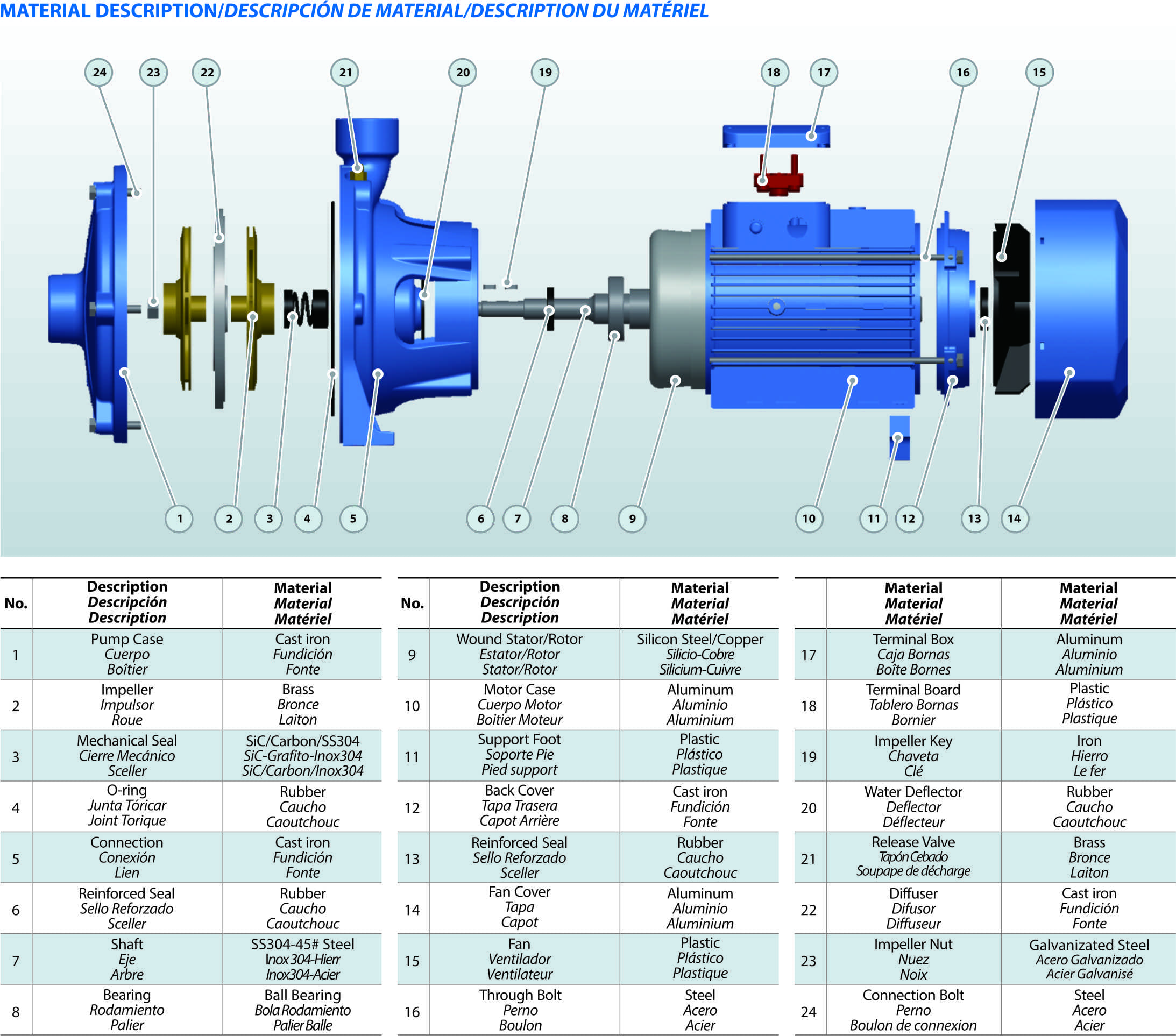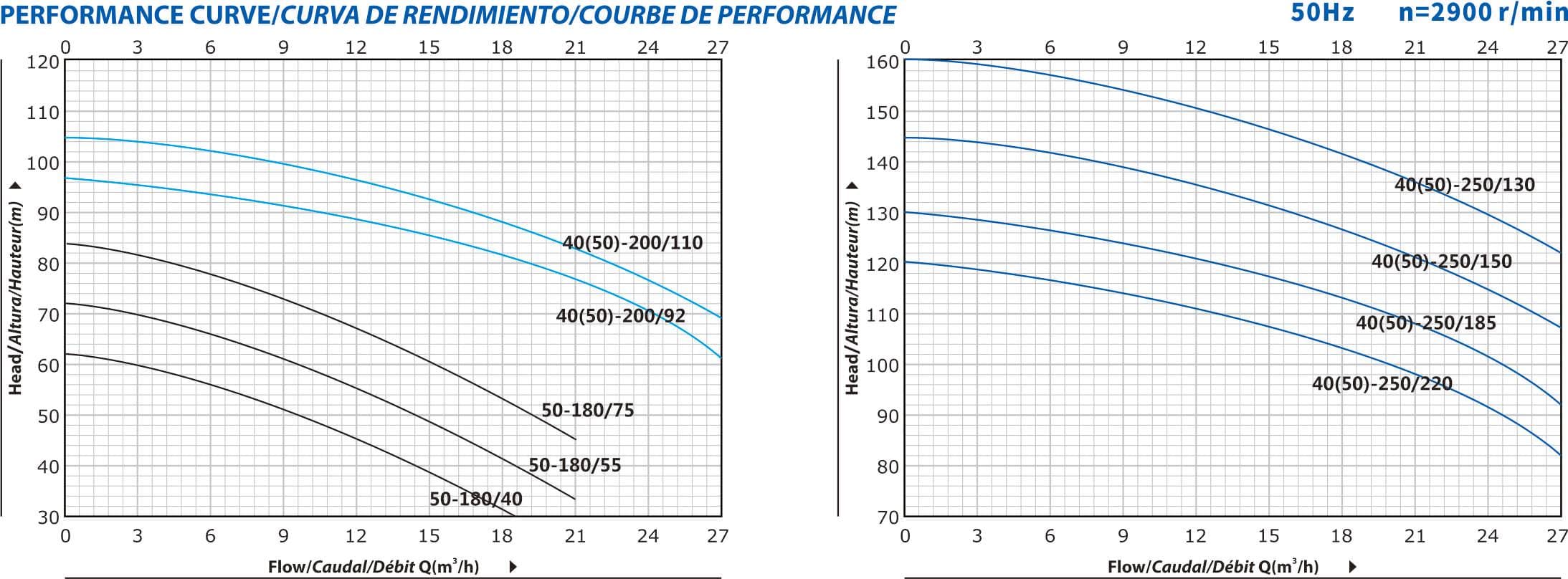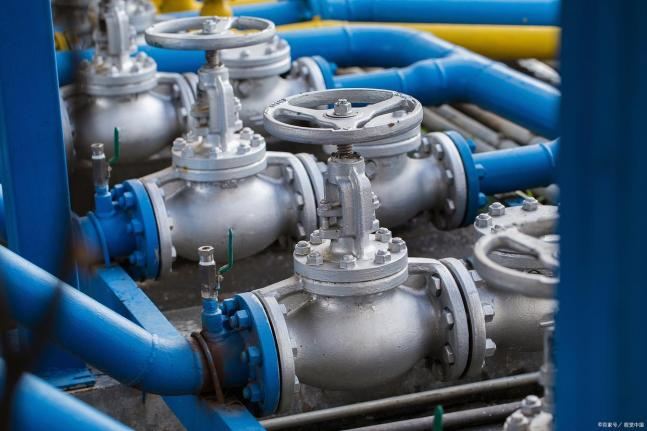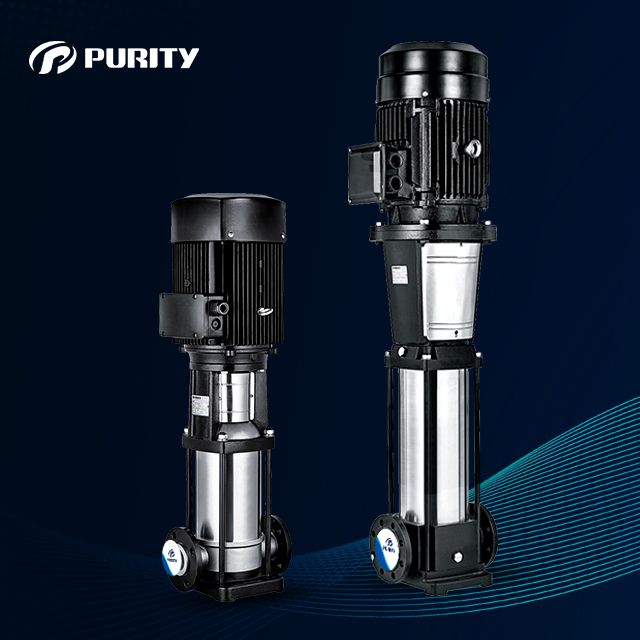Centrifugal pumps are vital components in various industries, used for transporting fluids through systems. They come in different designs to suit specific needs, and one key distinction is between single impeller (single suction) and double impeller (double suction) pumps. Understanding their differences and respective advantages can help in selecting the right pump for specific applications.
Single Suction Pump: Design and Characteristics
Single suction pumps, also known as end suction pumps, feature an impeller designed to draw water from one side only. This design results in the impeller having asymmetric front and back cover plates. The basic components include a high-speed rotating impeller and a fixed worm-shaped pump casing. The impeller, typically with several backward-curved vanes, is fixed on the pump shaft and driven by a motor to rotate at high speed. The suction port, located at the center of the pump casing, is connected to the suction pipe equipped with a one-way bottom valve, while the discharge outlet on the pump casing side connects to the discharge pipe with a regulating valve.
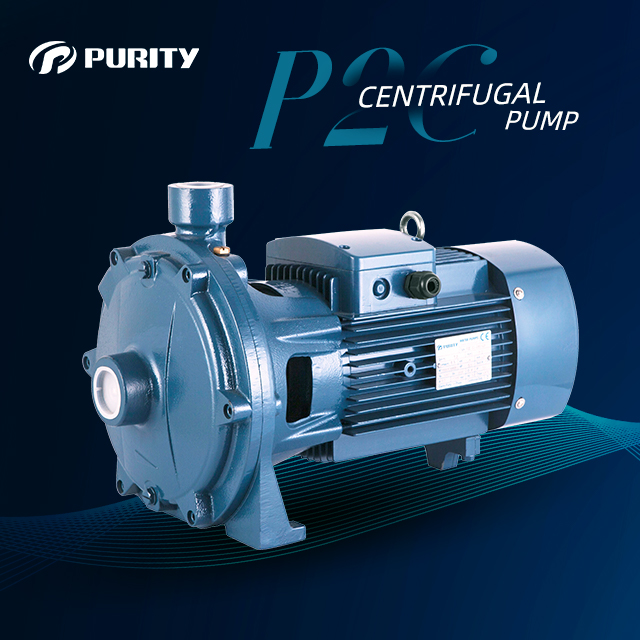
Figure | Purity double impeller centrifugal pump-P2C
Advantages of Single Suction Pumps
Single suction pumps offer several advantages:
Simplicity and Stability: Their simple structure ensures smooth operation and easy maintenance. They occupy less space, making them convenient to install.
Cost-Effectiveness: These pumps are cost-effective, with lower initial costs and reasonable pricing, making them accessible for various applications.
Suitability for Low Flow Applications: Single suction pumps are ideal for scenarios requiring lower flow rates, such as agricultural irrigation and small-scale water supply systems.
However, single suction pumps do have some limitations:
Axial Force and Bearing Load: The design creates significant axial force, leading to higher bearing loads. This can result in increased wear and tear on the bearings, potentially reducing the pump’s lifespan.
Double Suction Pump: Design and Characteristics
Double suction pumps are designed with an impeller that draws water from both sides, effectively balancing the axial forces and allowing for higher flow rates. The impeller is symmetrically designed, with water entering from both sides and converging within the pump casing. This symmetrical design helps in reducing the axial thrust and bearing load, ensuring smoother operation.
Double suction pumps are available in various types, including horizontal split case, vertical split case, and double suction inline pumps. Each type offers unique advantages and is suited to specific applications:
1. Horizontal Split Case Pumps: These pumps have a volute that is split horizontally, making them easier to service but requiring significant space and heavy lifting equipment to remove the top part of the casing.
2. Vertical Split Case Pumps: With a vertical split and removable cover plate, these pumps take up less space and are easier to service, especially in configurations where suction and discharge piping are vertical.
3. Double Suction Inline Pumps: Typically used in large pipe systems, these pumps can be challenging to service as they require the motor to be removed to access internal components.
Advantages of Double Suction Pumps
Double suction pumps provide several significant benefits:
Higher Flow Rates: Their design allows for higher flow rates, making them suitable for high-demand applications such as HVAC systems (2000 GPM or 8-inch pump size).
Reduced Axial Thrust: By balancing the axial forces, these pumps experience less wear and tear on bearings, contributing to longer operational life (up to 30 years).
Anti-Cavitation: The design minimizes the risk of cavitation, enhancing the pump’s efficiency and performance.
Versatility: With multiple configurations available, double suction pumps can adapt to various piping requirements, making them suitable for industries like mining, urban water supply, power stations, and large-scale water projects.
Figure | Purity double impeller centrifugal pump P2C spare parts
Choosing Between Single and Double Suction Pumps
When deciding between single and double suction pumps, several factors should be considered:
1. Flow Requirements: For applications with lower flow requirements, single suction pumps are cost-effective and sufficient. For higher flow needs, double suction pumps are preferable.
2. Space and Installation: Double suction pumps, especially vertical split case designs, can save space and are easier to maintain in tight installations.
3. Cost and Maintenance: Single suction pumps are cheaper and easier to maintain, making them ideal for budget-sensitive projects. In contrast, double suction pumps, though more expensive initially, offer longer service life and better performance in demanding applications.
Figure | Purity double impeller centrifugal pump P2C curve
Conclusion
In summary, both single and double suction pumps have distinct advantages and are suited to different applications. Single suction pumps are ideal for low flow, cost-sensitive scenarios, while double suction pumps are better for high flow, long-term projects requiring reliable and efficient operation. Understanding these differences ensures the selection of the right pump for any specific need, optimizing performance and cost-efficiency.
Post time: Jun-19-2024

